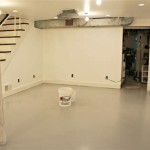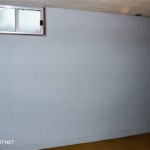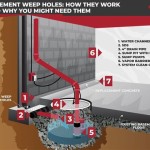Why Did My Basement Floor Crack?
Discovering cracks in a basement floor can be alarming. While some cracks are merely cosmetic, others may indicate serious structural issues requiring professional attention. Understanding the various causes of basement floor cracks can help homeowners assess the severity of the problem and determine the appropriate course of action.
One of the most common causes of basement floor cracks is shrinkage. Concrete, the primary material used in basement floors, shrinks as it cures. This shrinkage can lead to cracking, especially if the concrete wasn't properly mixed or cured. Control joints, intentionally placed grooves in the concrete, are designed to accommodate this shrinkage. However, if these joints are improperly spaced or not deep enough, cracks can still occur. Furthermore, rapid drying due to high temperatures or low humidity can exacerbate shrinkage cracking.
Settlement is another significant contributor to basement floor cracks. The ground beneath a house can shift and settle over time due to various factors, including changes in moisture content, soil erosion, and poor compaction during construction. As the ground settles unevenly, it can exert pressure on the foundation and basement floor, leading to cracking. These cracks can range from hairline fractures to significant gaps, and their pattern can often indicate the nature of the settlement.
Hydrostatic pressure is the force exerted by water against a surface. When the soil surrounding a basement becomes saturated with water, it exerts hydrostatic pressure against the foundation walls and floor. This pressure can cause the concrete to crack, especially if the basement wasn't properly waterproofed. Cracks caused by hydrostatic pressure are often accompanied by other signs of water intrusion, such as dampness, efflorescence (a white, powdery substance), and mold growth.
Heaving is the upward movement of the ground due to expansion. This can be caused by frost heave, where water in the soil freezes and expands, pushing the ground upwards. In climates with significant freeze-thaw cycles, this can exert tremendous pressure on the basement floor, causing cracks. Expansive soils, such as clay, can also contribute to heaving. These soils absorb water and expand, putting pressure on the foundation and floor.
Tree roots can also cause basement floor cracks. As trees grow, their roots can extend under a house and exert pressure on the foundation. Large roots can even penetrate cracks in the concrete, further widening them over time. The proximity of trees to the foundation and the type of tree can influence the likelihood of root-related damage.
Improper construction practices can also contribute to basement floor cracks. Insufficient reinforcement, such as rebar, can weaken the concrete and make it more susceptible to cracking. Poorly compacted subgrade can also lead to settlement and cracking. Using the wrong concrete mix, inadequate curing time, and improper placement of control joints are other examples of construction deficiencies that can increase the risk of cracks.
Overloading the basement floor can also cause cracks. While basements are designed to support a certain amount of weight, excessive loads can exceed the concrete's capacity and lead to cracking. Storing heavy equipment, large quantities of materials, or installing heavy fixtures can contribute to overloading.
Earthquakes, although less common than some other causes, can also cause basement floor cracks. The seismic activity can cause the ground to shift and put stress on the foundation and floor, resulting in cracks. These cracks may appear suddenly and can be accompanied by other signs of structural damage.
The type and severity of the crack can offer clues about its underlying cause. Hairline cracks are generally less concerning than wider cracks or those that are actively growing. Vertical cracks are often caused by shrinkage, while horizontal cracks may indicate settlement or hydrostatic pressure. Stair-step cracks are often associated with differential settlement, where one part of the foundation settles more than another. Cracks that are accompanied by water seepage or other signs of moisture intrusion require immediate attention.
Identifying the cause of basement floor cracks is essential for determining the appropriate repair strategy. While minor cracks may require simple cosmetic repairs, more significant cracks may necessitate structural underpinning or other extensive interventions. Consulting with a qualified structural engineer or foundation repair specialist is crucial for assessing the situation and developing a safe and effective repair plan.

Causes Of Basement Floor Cracks And What To Do About Them News Events For Systems Inc

Cracks In Basement Floor Signs Of Foundation Problems

What Causes Cracks In Basement Floors Everdry Toledo Ohio

Why Your Basement Floor Is Cracked Foundation Repair Company In Or And Wa Terrafirma

Are Cracks In My Basement Floor Normal The Real Seal Llc

What Causes Leaky Floors In Basements Fixing Leaking Basement

Large Concrete Cracks In Basement Structural Engineering General Discussion Eng Tips

New Jersey Basement Floor Crack Repair Fortress Stitch Regrid

Cracks In Basement Floor 6 Common Causes

Basement Floor Cracks How To Fix In A
See Also








